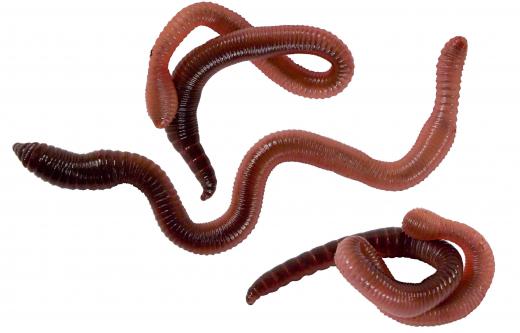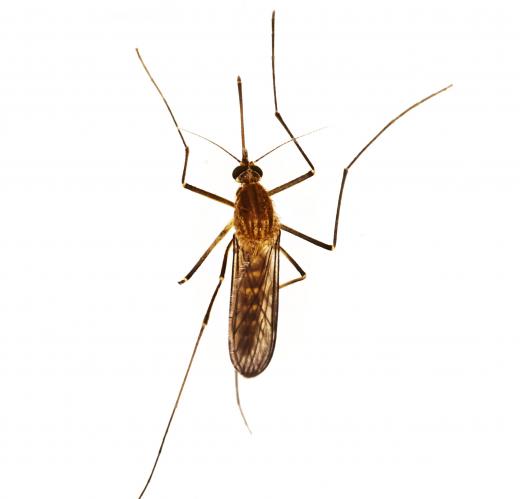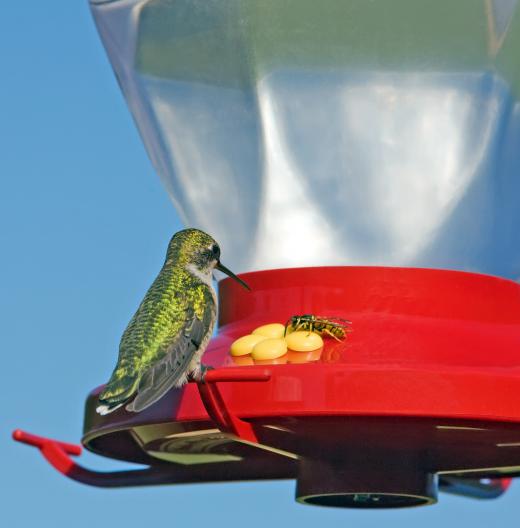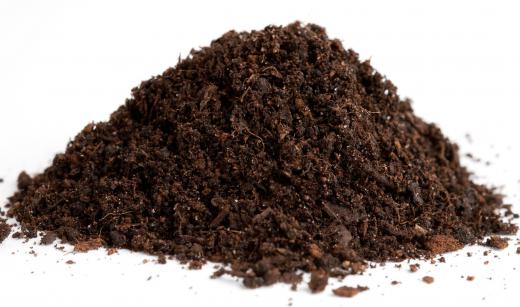What Are the Five Primary Feeding Modes?
 Michael Anissimov
Michael Anissimov
The five primary feeding modes used by organisms are fluid feeding, filter feeding, bulk feeding, deposit feeding, and phagocytosis, in rough order of commonality. It is very difficult to find a method of feeding which does not fit into one of these feeding modes, although there are many sub-categories within each.
Fluid feeding, the rarest of feeding modes, consists of sucking the fluids out of another plant or animal. Like all other primary feeding modes, it is used by herbivores, carnivores, and omnivores alike. Some well-known fluid feeders include hummingbirds, aphids, spiders, ticks, leeches, vampire bats, and mosquitos. Since many filter feeders feed on blood, they are unpopular among humans and other targeted mammals. Some feed only on the fluids of insects or plants, however.

Filter feeding is the feeding mode found among sponges, moon jellies, krill, mysids, three species of shark, and many whale species, such as the baleen whale. Of all feeding modes, this might be among the easiest: instead of requiring predatory or precision action, the filter feeder just exposes its filters — which take many different forms — and sieves them through food particles. The success of one of the simplest animals, sponges, is a testament to the power of filter feeding.

A feeding mode much more common than the prior two, and the predominant mode for most organisms familiar to us, is bulk feeding. And no, this is different from the bulk feeding recommended by a sports nutritionist to an athlete or someone doing weight training. Bulk feeding consists of consuming chunks or the entire body of other animals or plants. Most mammals, birds, fish, and reptiles are bulk feeders, usually consuming plants but sometimes other animals as well. That would explain why some of these species are so big and strong. In the human world bulking up can't just be achieved through working out, support from a nutritionist may also be necessary. Carnivores specialize specifically in hunting, killing, and eating other animals. You can't expect carnivores to consume quality greens powder or the organic version - fruits and vegetables. But omnivores like humans can and even benefit from it. Some animals, like humans, are omnivorous, eating both plants and other animals. An imbalance in consumption can lead to diseases. Thankfully, humans have access to doctors and professionals like a renal nutritionist that can help them regulate the quality and quantity of food intake. Although nowadays, humans have more food options in the form of GMOs, powdered supergreens, nutritious oils, and more.

Deposit feeding consists of consuming food particles in the soil. Because they usually consume detritus, most deposit feeders are detrivores. A huge range of terrestrial arthropods, including many beetles and mites, are deposit feeders. The earthworm might be the archetypal example of a deposit feeder, as it consumes large quantities of soil and plays an integral part of breaking down dead plant matter into humus. It is considered more common than bulk feeding because of the huge number and diversity of soil organisms that exist.

Phagocytosis is the feeding mode most popular among many unicellular organisms, such as amoeba. It consists of a cell completely enveloping another cell and digesting it using a lysosome. The phagocytes in the human immune system use phagocytosis to consume invaders such as bacteria. Most heterotrophic (non-photosynthesizing) unicellular organisms use phagocytosis as a way to get food.
AS FEATURED ON:
AS FEATURED ON:














Discussion Comments
We live in the country and always see a lot of earthworms after it rains. Some kids will go out and collect these and sell for fishing bait.
I don't know if all deposit feeders are as beneficial as earthworms are, but they really do a lot of good for the environment. I don't mind seeing the earthworms as long as I don't have to touch them. I know they are good for the soil, and provide other benefits that are good for the ecosystem.
As far as fluid feeders go, I think mosquitoes are better than leeches. If you have ever had leeches stuck to your body, you know what I mean. When we were kids we liked to swim in the lake, and more than once we ended up with leeches on us. Even as a kid this really freaked me out and there is no way I would swim in a lake today just for that reason alone.
The only fluid feeder I can think of that I like is the hummingbird. All the other animals or insects that rely on this method of feeding I try to avoid.
For some reason mosquitoes seem to be attracted to me. All I have to do is step outside and I end up getting mosquito bites. These bites don't go away very fast and turn into red welts that last for several weeks. I don't like the thought of anything living off my blood, and try to avoid them as much as I can.
I have never really given much thought to the different kinds of feeding modes. I know I am fascinated by the way the hummingbirds get their food. I put out several hummingbird feeders during the warm season, I enjoy them all season long.
It seems like I see them more often feeding on the water and sugar mixture at the feeders than I do at some of the flowers I have planted around.
It amazes me how these little birds can fly forwards and backward, and their whole diet is just from the nectar they get from plants or whatever liquid people put in their feeders. I don't even add red food coloring to the food I mix up for them. My feeders are red, and it doesn't take them very long to find the food.
Post your comments